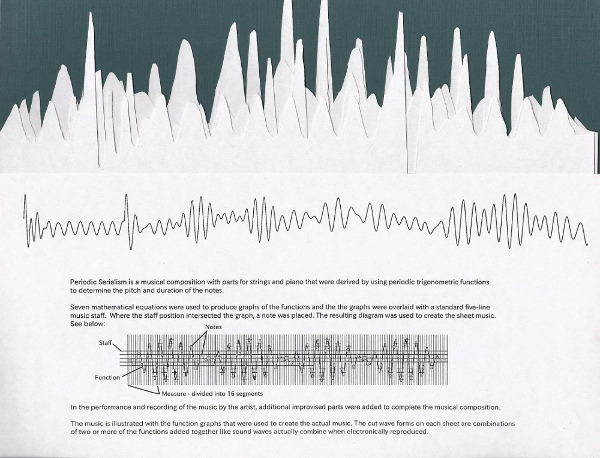CATALOG NO.B49 2012
Periodic Serialism

Specifications Edition of 20
8-1/2" x 11" accordion fold opens to 44", digital print and cut paper with original music composition on CD
Collections
THIS EDITION IS SOLD OUT - Copies are in private collections
Permanent collections -
San Francisco MOMA
Yale University
Evergreen State College
King St. Stephen Museum Szekesfehervar, Hungary
Baylor University Crouch Library, Artist Book Collection
University Colorado
Carleton College Gould Library, Artist Book Collection
UCLA Arts Library Artist Book Collection
UC Santa Barbara Davidson Library, Special Collections
University of Central Florida Hlit Library, Special Collections
The Center for Book Arts New York
Bank Street Arts Sheffield, UK
IUPUI Heron Art Library, Artist Book Collection
Carnegie Mellon University Hunt Library, Special Collections
University of Miami Richter Library, Special Collections
Periodic Serialism is a musical composition with parts for strings and piano that were derived by using periodic trigonometric functions to determine the pitch and duration of the notes.
Seven mathematical equations were used to produce graphs of the functions and the the graphs were overlaid with a standard five-line music staff. Where the staff position intersected the graph, a note was placed. The resulting diagram was used to create the sheet music.
In the performance and recording of the music by the artist, additional improvised parts were added to complete the musical composition.
The music is illustrated with the function graphs that were used to create the actual music. The cut wave forms on each sheet are combinations of two or more of the functions added together like sound waves actually combine when electronically reproduced.





